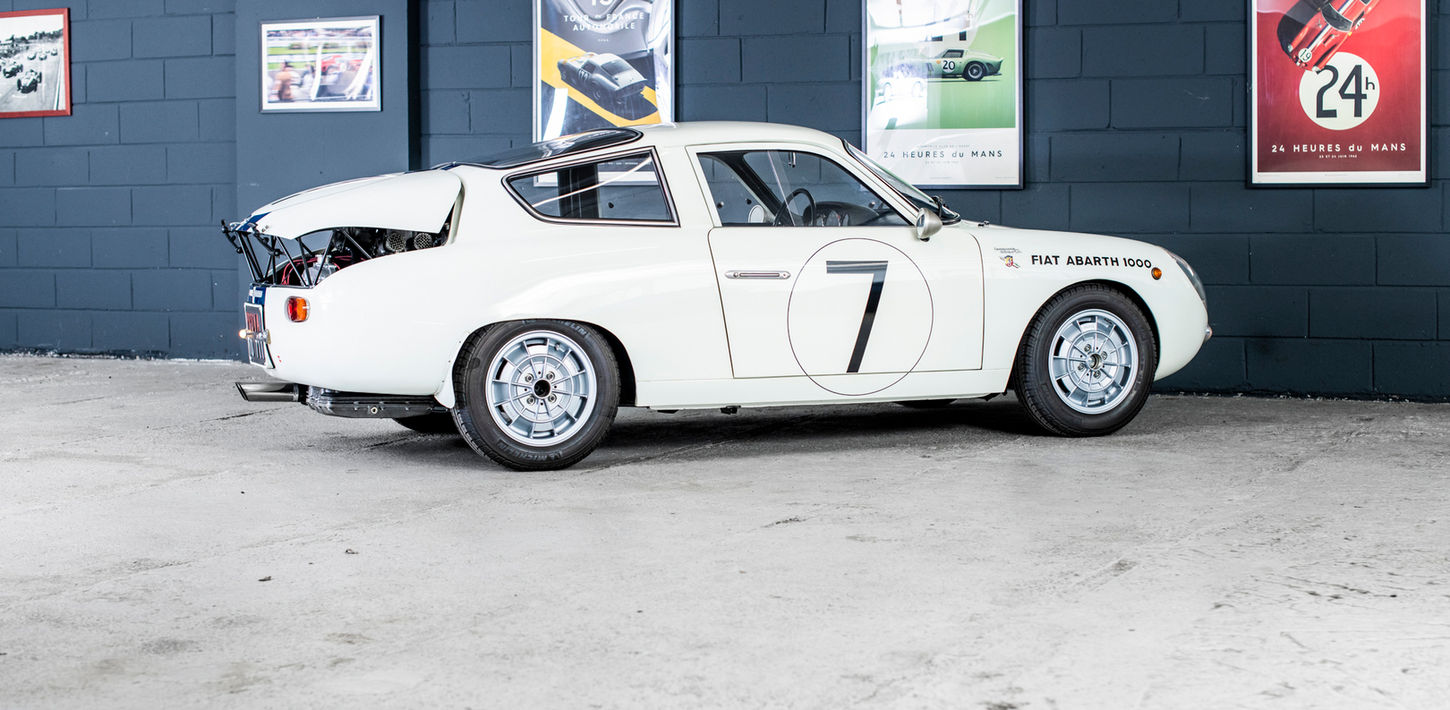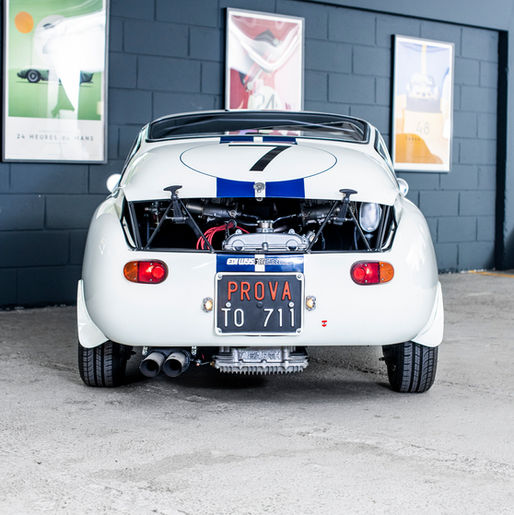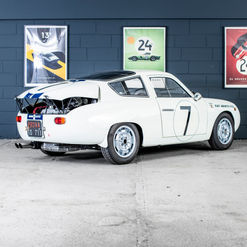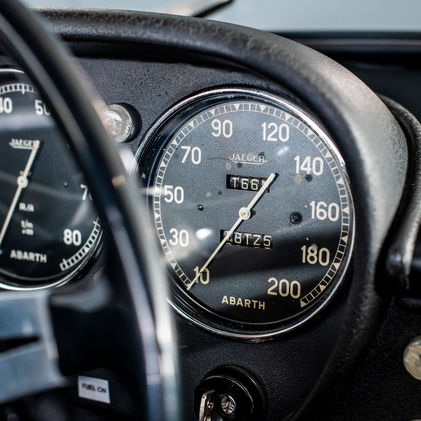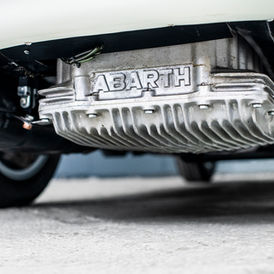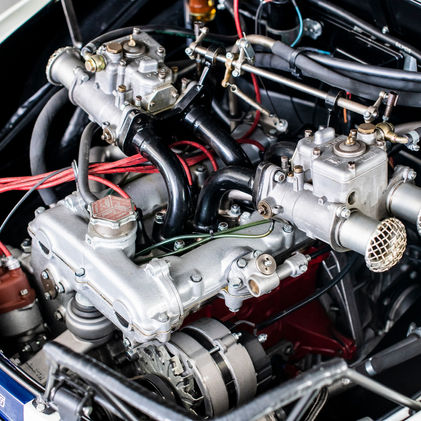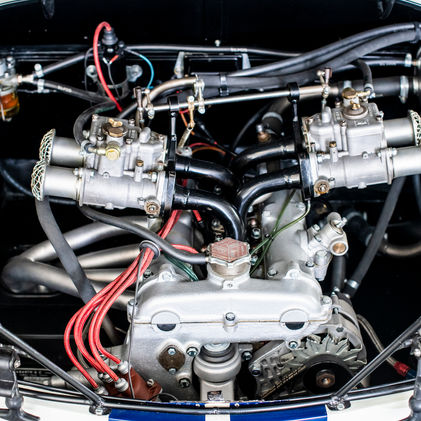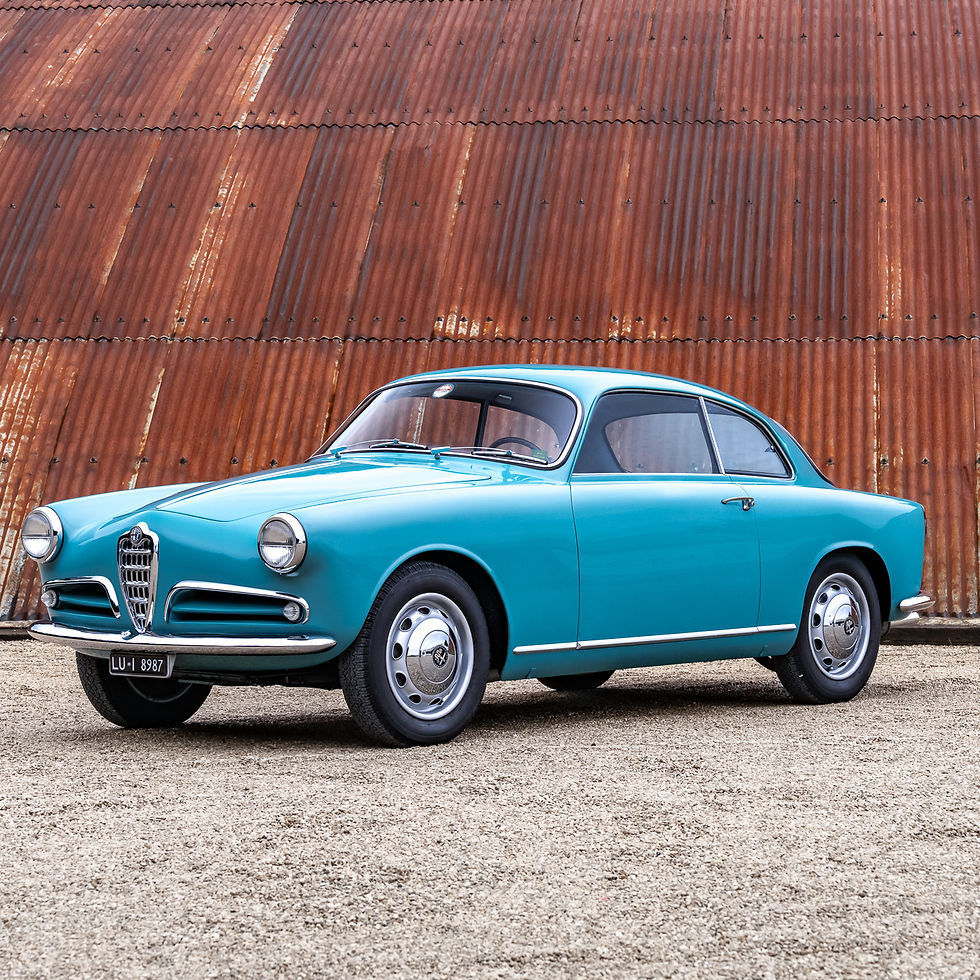Fiat Abarth 1000 GT Bialbero – Legend of Sebring 1962
Abarth, a brand dedicated to competition:
Founded in 1949 by Carlo Abarth, the Scorpion brand built its reputation on bold engineering and exceptional performance in motor racing. Specializing in small-displacement cars derived mainly from Fiat underpinnings, Abarth quickly established itself as an essential reference in GT and sport-prototype racing in the 1960s.
Paradoxically, it was by forging closer ties with Fiat that Abarth gained legitimacy as a manufacturer in its own right. At the 1956 Geneva Motor Show, the Abarth stand featured a herringbone of four cars, all equipped with the “750” powertrain: Bertone's 215 A coupé, a wiser coupé by Viotti, a Fiat 600 sedan decorated by Ghia, and a sedan created by Zagato.
At last, here it is, the berlinetta that will spread Abarth's fame around the world. Presented in a white livery, the 750 GT took its lines from a model that Zagato had shown at the 1955 Turin Motor Show, and which was already powered by a Fiat 600.
At the 1958 Paris Motor Show, Abarth exhibited two Zagato-bodied sedans designed to appeal to French customers: a 500 GT and the new 750 Record Monza. The 750 Record Monza was distinguished by a stockier body.
At the 1959 Turin Motor Show, the 750 Bialbero Record Monza Record disappeared, to be split into two muscular variants: 700 and 850 Bialbero Record Monza, which corresponded to the sports categories for which the two cars were intended.
In October 1961, Zagato left to make way for new bodywork. The 700 and 1000 Bialbero received a brighter body that retained identical masses, but was no longer designed by Zagato. Designed by Mario Colucci, it was produced in the Beccaris workshops.
Abarth has made a name for itself on European racetracks thanks to constant technical innovation and a focus on performance and lightness. Its models, mainly based on Fiat underpinnings, won numerous titles in Grand Touring and Sport-Prototype championships, helping to establish the Scorpion's reputation in the world of motor sport.
In the 1960s, Abarth dominated the 1000 cm³ category, a highly competitive segment in which manufacturers such as Simca and Porsche competed. The Abarth 1000 Bialbero, with its low weight and optimised engine, beat off its main rivals.
The Targa Florio, 1 000 km Nürburgring, Mugello and Sebring became the scene of fierce battles in this category. In GT and Sport events, Abarth 1000s, particularly in their ‘Bialbero’ and ‘SP’ forms, regularly won thanks to their agility in corners, their effective braking and their excellent roadholding. At the time, Abarth was renowned for its ability to produce extremely competitive cars with budgets well below those of its competitors. The ingenuity of Carlo Abarth and his engineers enabled them to make the most of Fiat engines, reworking them to achieve unexpected levels of performance.
Among these mechanical gems, the Fiat Abarth 1000 GT Bialbero stands out distinctly. Powered by a 982 cc inline four-cylinder engine featuring twin overhead camshafts (Bialbero) and fed by twin Weber 40 DCOE carburetors, the car produced nearly 100 horsepower for a weight of just 570 kg. It featured a five-speed manual gearbox, independent suspension on all four wheels, and integrated disc brakes—a remarkably advanced specification for the era. In 1962, a test by the renowned magazine Auto, Motor und Sport described the car: "With a brutal and sharp sound, the engine immediately reveals its purely sporty nature—power and agility capable of challenging even far more powerful GT cars." Reaching speeds up to 212 km/h, this compact Italian impressed greatly with its speed and unmatched agility.
Briggs Cunningham – An American motorsport legend
Briggs Swift Cunningham, a wealthy industrialist, passionate driver, and visionary figure in American motorsport, founded the Cunningham Racing Team in 1950. Renowned for its cars proudly displaying American racing colors (white with dark blue stripes), Cunningham's ultimate ambition was winning the 24 Hours of Le Mans with an American car driven by an American team. Although outright victory eluded him, his team achieved significant successes, including a third place at Le Mans in 1953 with the Cunningham C-5R.
Sebring 1962: Three Abarths at the heart of an unforgettable battle
In 1962, Cunningham entered three Fiat Abarth 1000 GT Bialberos for the first race of the FIA World Constructors Championship, held on March 23rd at the legendary Sebring Circuit in Florida.
- Car #7, our car, (Chassis S/N 1127998, engine n°229/259), driven by Walt Hansgen, finished second just eight seconds behind the winner.
- Car #8 (Chassis S/N 1128948, engine n°229/235), driven by Bruce McLaren, won the race.
- Car #9 (Chassis S/N 1127862, engine n°229/102), driven by Briggs Cunningham or Roger Penske according to some sources, retired due to gearbox failure after 1½ hours.
An exceptional season crowned with a world championship title
Throughout the 1962 season, the Fiat Abarth 1000 GT Bialbero consistently dominated its class against tough competitors such as the Porsche 356 Carrera and Simca Abarth, securing the prestigious FIA World Championship for GT Manufacturers in the under-1000cc category.
History of chassis 1127988
Official Cunningham team car: #1127988 was number 7 at Sebring 1962, driven to second place by Hansgen. Our car continued the 1962 season under the same colours and then raced actively until the end of 1964. It had several successive owners: acquired in November 1962 by Don Rosendale, then sold to Jim Johnson in 1964. He kept our Abarth until 1986, when it was bought by Mike Blumberg. The car then passed to Jim Dulfield in 1993, then to Lothar Hoess in 2005, before being imported into Switzerland in 2016. The latter owner decided to undertake a meticulous restoration to return the car to its original configuration, once again sporting the emblematic colours of the Cunningham stable. The work was entrusted to Edi Wyss Engineering, a renowned Ferrari engine builder and great connoisseur of Abarth mechanicals. Thanks to this rejuvenating treatment, the car is now in irreproachable condition. The sound of its throaty engine is an invitation to climb the Transalpine passes or to take on the most legendary circuits. Regularly registered in Switzerland and accompanied by a wonderfully comprehensive history file, we invite you to come and discover this jewel at our Paris premises.

















